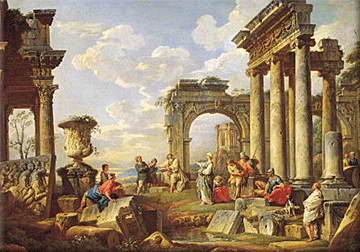-Roman Revival 1850 Papal States Grand Tour Micro Mosaic Pendant In 18Kt Yellow Gold
A Roman revival grand tour pendant with Maltese cross.
An exceptional historical piece, created in the Victorian Grand Tour era in Rome Italy during the Papal States period, back in the 1850. It was carefully crafted with Roman-Etruscan revival patterns in solid rich yellow gold of 18 karats and embellished in the obverse with an intricate micro mosaic of a Maltese crusaders cross. In the reverse in high relief is the name of the city ROMA. The round gold frame is decorated with a patterns of twisted wires and fitted on top with an oval bail to wear in a chain or necklace.

The micro mosaic is very well executed, of Italian origin and made in Rome. It was created in the shape of a crusaders Maltese cross, from more than six hundred tiny pieces, carved from natural stones, such as; blue lapis lazuli, red coral, black onyx, green malachite, black onyx and creme nacre.
The Maltese cross is a cross symbol, consisting of four "V" or arrowhead shaped concave quadrilaterals converging at a central vertex at right angles, two tips pointing outward symmetrically. It is a heraldic cross variant which developed from earlier forms of eight-pointed crosses in the 16th century. Although chiefly associated with the Knights Hospitaller (Order of St. John, now the Sovereign Military Order of Malta), and by extension with the island of Malta, it has come to be used by a wide array of entities since the early modern period, notably the Order of Saint Stephen, the city of Amalfi, the Polish Order of the White Eagle (1709), the Prussian order Pour le Mérite (1740), and the Bavarian Military Merit Order (1866).
Weight: 14.25 Grams, (9.13 Dwt).
Measurements: 56 mm by 28 mm by 11 mm (2.20 x 1.10 x 0.43 Inches).
Hallmarks: Stamped with the old Papal States assay marks for the 22kt gold. One time with the Crossed Keys and a Cardinal Capello inside a triangle and one time with the maker's lozenge cartouche with the number 26 for the Roman identification goldsmith.
History of the Hallmark

The first statutes of the guild of Roman goldsmiths date back to 1358, in which was stated the rule of the warranty punch. The University of Goldsmiths was founded in 1508 and the statutes approved the following year introduced the use of the master's mark in addition to the previous guarantee mark. In 1738, with the reform of the Statutes of Goldsmiths, the guild acquired the name of "Nobil Collegio degli Orefici ed Argentieri di Roma" (Noble College of Goldsmiths and silversmiths of Rome). The warranty mark used prior to the French invasion was a series of "crossed keys of St. Peter under a liturgical umbrella" enclosed into shields, ovals or other geometric shapes.
Note: It was in 1870, the conquest of Rome marked the end of Stato Pontificio (Papal State). Italy attained its unity along with a unique system of hallmarking, introduced in the Regno d'Italia (Kingdom of Italy).
History Behind This Piece
Between the 1820 and 1890, ancient cities were discovered, such as Troy, Pompeii and Alexandria. Archaeological excavations in Egypt, Greece and Rome, discovered artistic pieces of these ancient cultures. These fabulous discoveries, stimulated cultural trips to these countries, popularly called "grand tour". Being the case that the enthusiast visitors bring back small objects, like souvenirs to be assembled into jewelry. The starting point of these trips were in the cities of Rome and Venice. this is why the craftsmen of these cities created small and interesting objects with ancient characteristics like this brooch.

Revival jewelry
The styles from the renaissance and Middle Ages, begun in the 1850’s, The Renaissance and Egyptian revivals were joined by a classical revival of Greek and Etruscan styles to conform a new aesthetic. As a result of the construction work on the Suez Canal in the mid-1860’s and the Egyptian excavations of Auguste Mariette and the resultant exhibit of Egyptian treasures at the exposition Universelle in 1867, a fascination for all things Egyptian and ancient cultures developed.
Note: Many nineteenth-century jewelers, were inspired to create their own versions of these ancient pieces, hence “Etruscan Revival”, the most famous being the House of Castellani. Characteristics of Etruscan style jewelry include use of high karat gold and semi-precious stones like lapis, malachite and agates, and most distinguishingly, the use of intricate filigree and granulation.
Collateral: This pendant is accompanied by a presentation jewelry box.
Condition: The overall condition of this pendant is very good. Beside the little normal wear, there is no problem to any parts. The little mosaic pieces are secured in the settings. This piece has been carefully inspected to guarantee the condition and authenticity.
INVENTORY REF: P032423MOEN/.3425
























